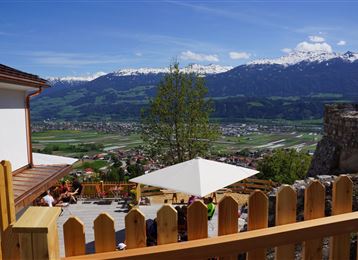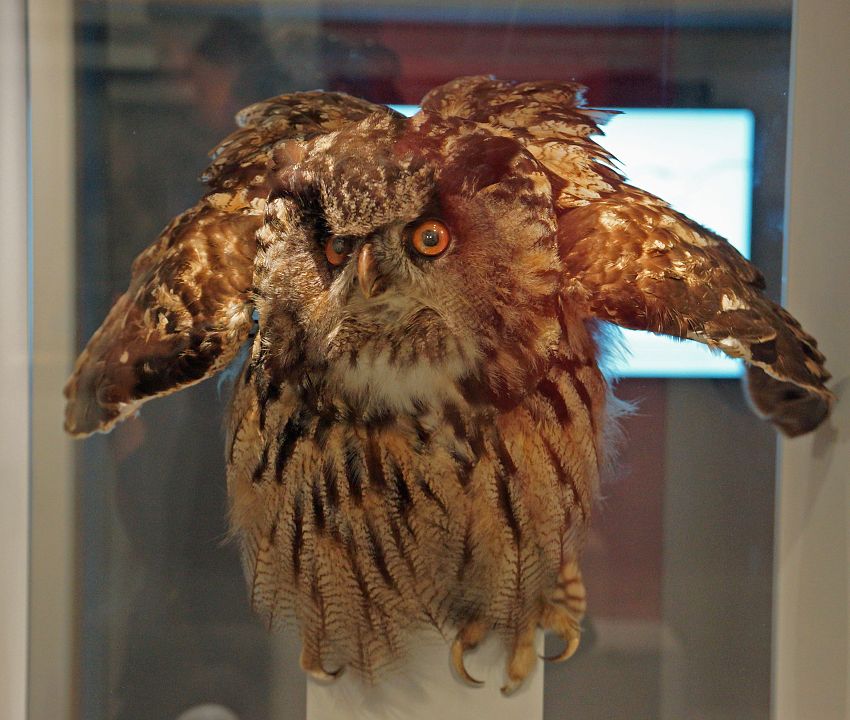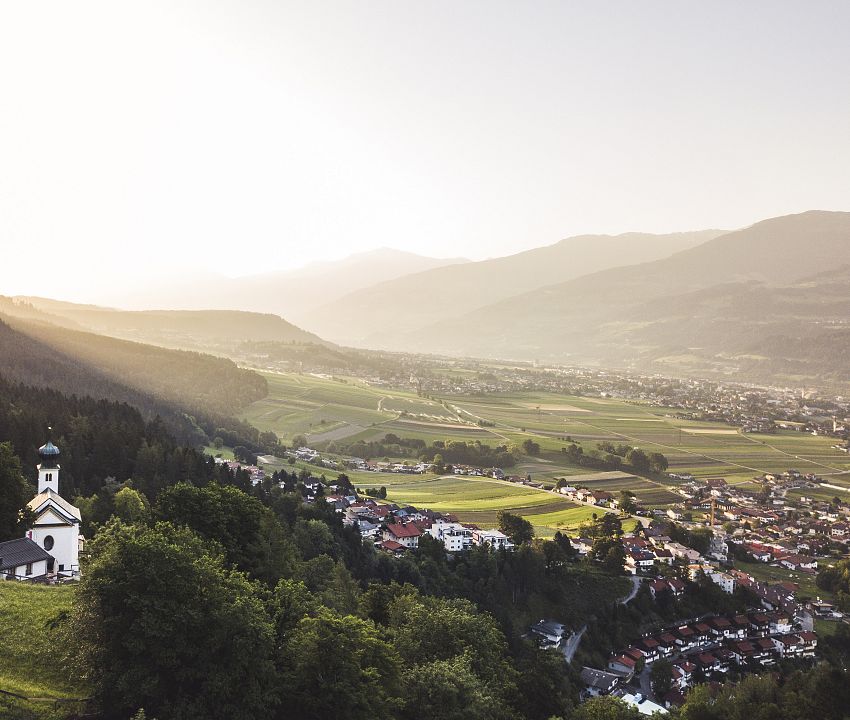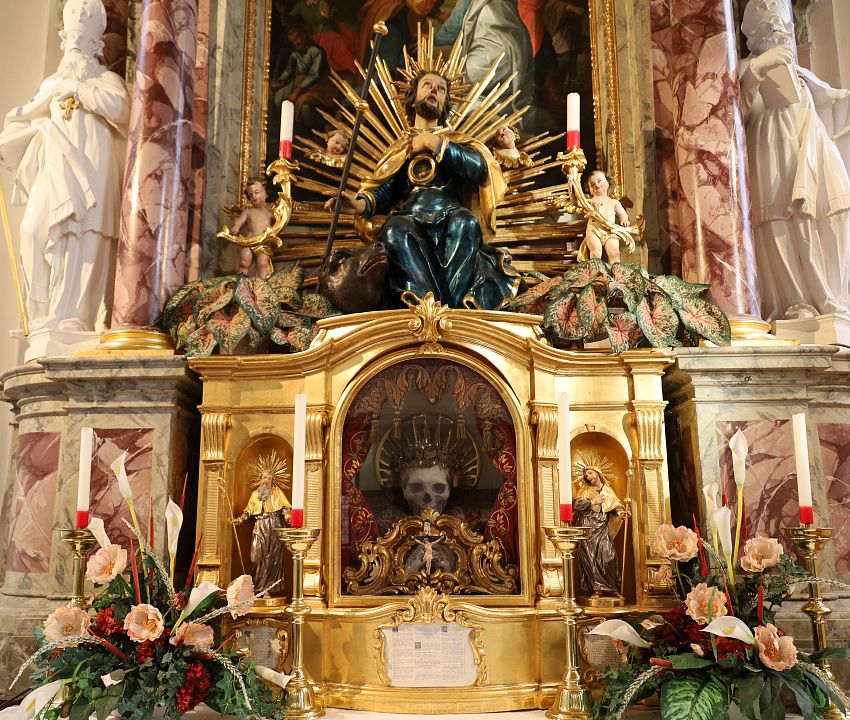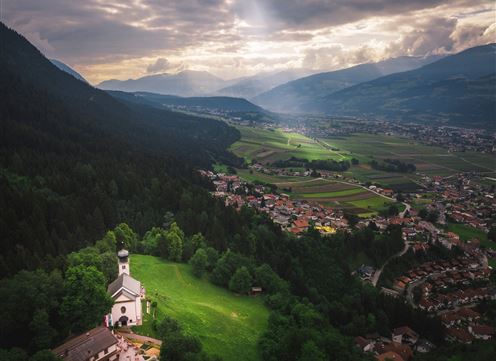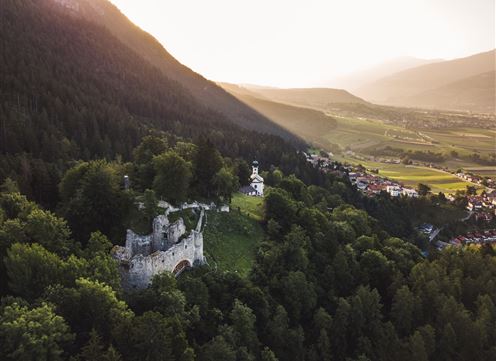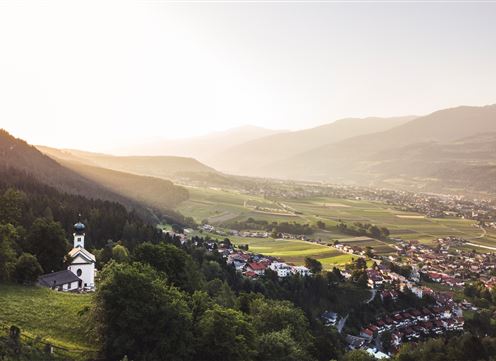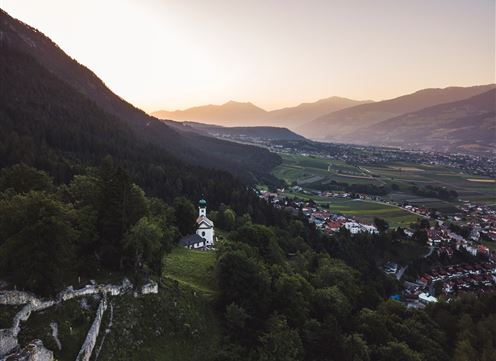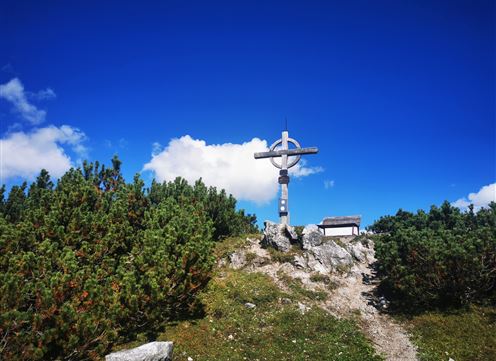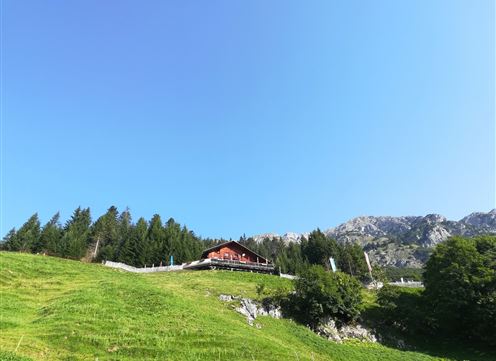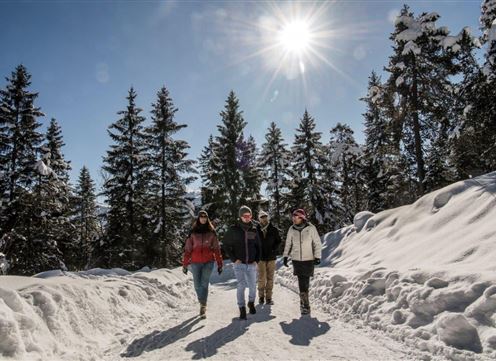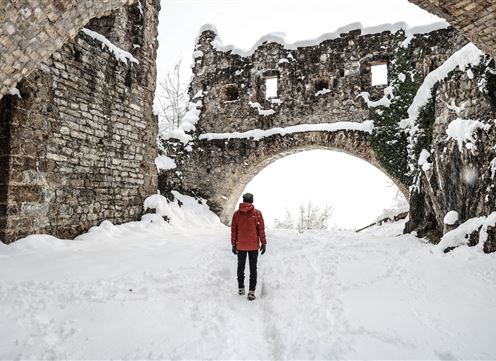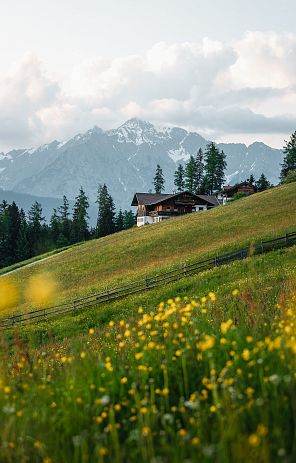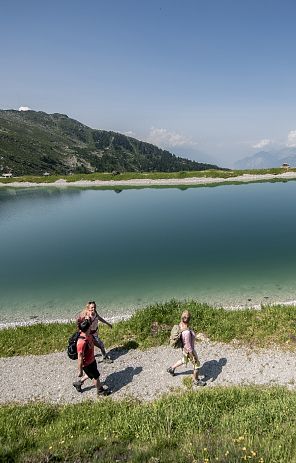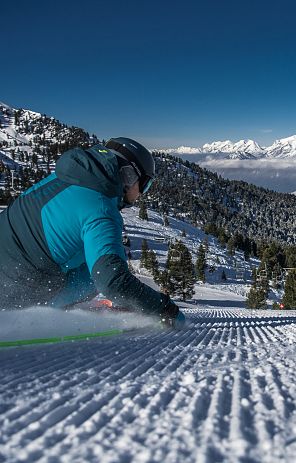Powerful Place. Castle ruins and Romedikirchl church in Thaur
The idyllic Romedikirchl church sits enthroned above the village of Thaur, not far from which are the castle ruins. They are located in the Karwendel Nature Park. Both can be reached via numerous hiking trails. For example, you can hike directly from the village parish church of the Assumption of the Virgin Mary in Thaur via the steep Way of the Cross with its grottos and romantic archway to the Romedius church at 793 m above sea level.
Shorter paths lead from the Thaurer Alm parking lot (Langgasse) via the Adolf-Pichler-Weg first to the ruins of Thaurer Burg and then on to the Romediwirt or the Schlosskirchl. A hiking trail also leads up the hill from the Thaurer Stollen parking lot in Kapons. It is the vocation path, which was built in 2007. The columns were designed by Paul Haider and cast in concrete by Fritz Lekar. The relief decoration was created by Absam artist Siegfried Obleitner. The reliefs depict Christ as the Good Shepherd, Mary the Mother of God, the holy apostles Peter and Paul and St. Romedius. Every first Wednesday of the month (May-October), there is a procession followed by mass at the castle.
Once you reach the top, you quickly understand why we have chosen this place as one of our places of power. Spirituality, history and culinary delights are rarely as closely intertwined as at this fantastic vantage point.
The power place Schlussruine & Romedikirchl at a glance
- Way of the cross and vocation
- Restaurant Romediwirt
- Permanent exhibition RundumTHAUR
- Der heilige Romedius
- Karwendel Nature Park
- Romedius Pilgerweg
- Palm Sunday procession to the Romedikirchl church
- Krippendorf Thaur
- Geocaching Thaur
The Romediwirt
The modern yet traditional Romediwirt is located right next to Thaur's landmark, the Romedikirchl. It was reopened in 2018. The architecture is in the form of a Widum, so that it blends in harmoniously next to the little church. The design of the dining room is bright and furnished with natural materials.
Fresh, seasonal produce from the Thaurer vegetable garden or Tyrol and Austria in excellent quality are the focus of the cuisine.
The Romediwirt is also ideal for celebrations of all kinds. In addition, there are always highlights such as the Saturday brunch buffet or barbecues in summer!
Exhibition aroundThaur
This special exhibition on the upper floor of the Romediwirt is dedicated to the history of the village of Thaur and its present-day inhabitants - the owls of the Karwendel. The project was realized together with the Chronos association in Thaur, the Karwendel Nature Park and the municipality in 2018. It is an inventory of 6000 years of settlement history.
Right at the entrance area, you are greeted by an arch with many colors. The 200 or so layers represent the many generations that have left their mark in various places in the municipality over the course of the 6000 years of settlement history. The colors and depths of the display cases correspond to the age of the finds: prehistoric arrowheads and decorative beads are dark blue and deeply hidden, Ottonian crossbow bolts are yellow, the history of Thaur Castle in the Middle Ages is shown in rich green and Romedius, the patron saint of the church on the castle hill, is shown in reddish orange.
Four species of owl can be observed in this area; they are exhibited as taxidermy specimens, but also with eggs and pellets. In addition, a film provides an entertaining account of the first settlement and the subsequent history.
Opening hours and contact
The exhibition is open during the opening hours of Romediwirt Thaur.
all aroundThaur
Romediwirt, 1st floor
Schlossgasse 17 in Thaur
Guided tours on request from Josef Bertsch +43 650 3161570, josef.bertsch@gmail.com
Directions
No direct access possible! Please use the parking lots at Thaurer Almweg or Thaurer Stollen.
The village of Thaur
Thaur was settled early on, as shown by the large number of prehistoric finds. Especially in the area above Thaur, i.e. around the church and the ruins, many Romanesque names have been preserved, while they were replaced by Bavarian names in the lower part of the village. The village name Thaur itself has not yet been fully investigated by linguists. One possibility would be the Alpine word taur, which means "ground swelling" or subsequently "strongly draining hill". This would precisely describe Thaur's location on the large alluvial cone of the Langenbach. However, a clear explanation of the name is not yet possible and awaits new, further findings from linguistics.
The village is first mentioned in documents as early as 827. It was already a flourishing place early on, which is probably due to the salt springs. The salt works were probably located in Thaur until 1270, when they were moved to Hall i.T.. It is also conceivable that the documents reporting on the salt works did not refer to the village but to the Thaur court, which was located in Thaur Castle and covered the area from Mühlau to Vomperbach until it was merged with the Hall municipal court in 1830.
The coat of arms of Thaur commemorates the castle and court of Thaur and was awarded by the Tyrolean provincial government in 1983, but was already used as a seal in the 18th century.
Source: Thaur village book
Der heilige Romedius
In hardly any other Tyrolean village are there as many people with the first name Romedius as in Thaur. St. Romedius is celebrated with great dignity and solemnity on 15 January.
The legend
According to legend, Romedius came from the noble and wealthy family of the Counts of Thaur and was born in the fourth century AD in the castle of the same name. Even at a young age, he felt more drawn to God than to earthly things; he spent many hours praying in a nearby rock cave. Above this cave, he built a small chapel dedicated to St. Peter, which was later converted into today's castle church.
There he made a vow to Jesus Christ to renounce all earthly pleasures and riches and to lead a life focused on the treasures of the hereafter. He gave away his possessions to the poor and set off on a pilgrimage to Rome, the Pope and the tombs of the apostles, among other places. On the way there, he stopped in Trento, where St. Vigilius was bishop. He approved of his godly plan and gave him his blessing. Deeply impressed by his encounters with the Pope and the tombs of the apostles, Romedius returned to Trent. From then on, he spent his life as a hermit on the Nonsberg, where he built a small church.
Romedius, who had already reached old age, wished to see St. Vigilius once before his death and receive his episcopal blessing. When they went to fetch the hermit's little horse from the pasture, they found it had been torn to pieces by a bear. Despite his fear, Romedius had a bridle put on the bear and it was as good as a lamb. Amid great amazement and rejoicing, Romedius rode the bear into the city of Trento and performed several miraculous healings.
After spending a few days with Vigilius, whom he greatly admired, Romedius returned with his bear to the hermitage, where he died soon afterwards. He found his final resting place in the chapel he had built on the hill.
So much for the legend. The figure of the historical Romedius is still the subject of exciting, if sometimes controversial, research.
Source: Thaurer Dorfbuch, Christoph Haidacher
